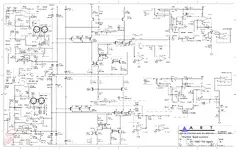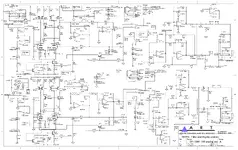M
mindw0rk
New member
Hi Guys!
I have got ART PRO MPA 2 preamp and XLR input on channel 1 is not working, the DI (HiZ) of the same channel is working, chanel 2 is ok, I have attached a schematic from the similar thread... I am not sure where I shall look for the issue, I can't read the schematic, is there any chance you can point me out where I shall look for?
Thanks!
I have got ART PRO MPA 2 preamp and XLR input on channel 1 is not working, the DI (HiZ) of the same channel is working, chanel 2 is ok, I have attached a schematic from the similar thread... I am not sure where I shall look for the issue, I can't read the schematic, is there any chance you can point me out where I shall look for?
Thanks!


